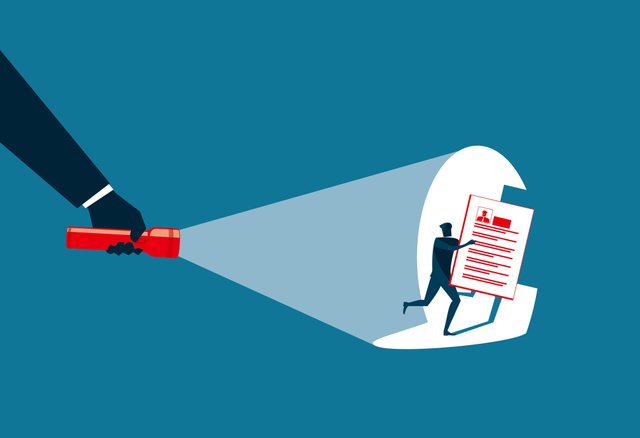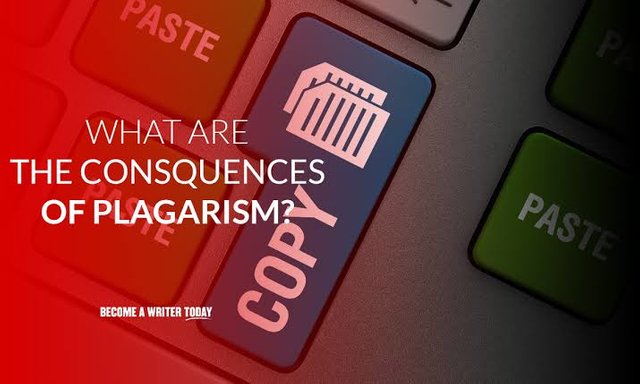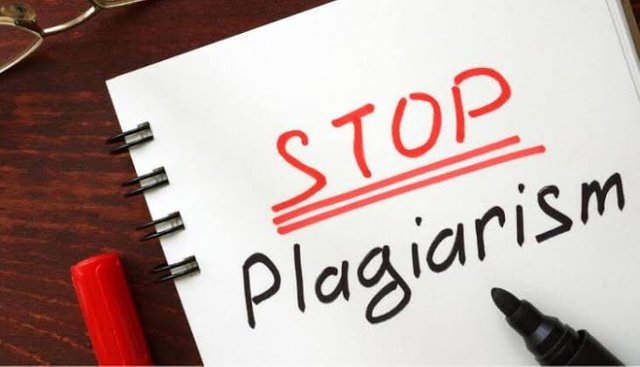Achievement Task 3: Content Etiquette by @dybastos
All You Need To Know About PLAGIARISM
Firstly What is plagiarism?
Plagiarism is showing or boasting of another person’s work claiming it to be your own work, even with their consent, by adding it to your works without full acknowledgement or permission from the real writer.
Both published and unpublished material, either in electronic form, printed or manuscript, this defines all.
Who’s regarded as a plagiarist?

source
Any Reporter That claims another person's work or idea and still pretends that it is their own work or idea, just because of the desire to get a good grade or fear of failing, The person will be tagged to be a plagiarist and a liar.
Types of Plagiarism
we have up to 7 types of Plagiarism but we will be discussing 5
1. Complete Plagiarism
This is the most severe type of plagiarism, where a writer or reporter takes his/her time to study what someone else created and submit it with his or her name attached as the owner. This can be tagged the same with stealing and intellectual stealing.2. Paraphrasing Plagiarism
This form of plagiarism is when a reporter or writer uses someone else’s idea or words and submitting them as his or her own. Paraphrasing means calming someone else’s ideas as yours in your own words.3. Accidental Plagiarism
This form of plagiarism can also be called Unintentional plagiarism and it happens when a reporter or writer refuses to follow proper scholarly procedures for citation without having intentions to cheat.
Accidental plagiarism never gives proper credit for another person’s research, words or ideas, even if you have no intentions to present it as your own, it’s still tagged as plagiarism and it is never accepted.4. Self Plagiarism
This form of Plagiarism involves reusing work and that you have submitted or published for a class. It can be Resubmitting the whole paper or Copying/paraphrasing some passages from your former work.
The highest problem with this form of plagiarism is that the reporter is misleading the community and audience by passing off and older piece of content into a new work.5. Mosiac Plagiarism
This form of plagiarism happens when a writer takes phrases from a source forgetting or refusing to add quotation marks, or using synonyms from the writers language whereas keeping the same general structure and meaning of the main work.
To avoid this plagiarism use quotation marks when using someone else’s works or statements, also include an in-text citation to indicate the original writer.
What’s Can Be PLAGIARIZED?
Here are some of the things that can plagiarized
- A Music
- An image
- A Poet
- An Assignment
- A file Document (online/offline)
- An Essay etc…
Consequences of Plagiarism
Your Reputation Is At Stake
When you are caught plagiarizing your reputation might be ruined because everyone will take you as a deceiver and won’t regard your works anymore.
It Might Cause Ban
When you’re working with company’s that’s against Plagiarized contents, just like Steemit, you might tend to undergo ban or might be kicked out of the company or platform.
Lack Of Trust
When you’re tagged a plagiarist people might tend not to trust any of your works, ideas or contents anymore in the future
5 Ways To Avoid Plagiarism
1. Using Direct Quotes - or don't quote at all
Sometimes when studying you will come across a passage that you noticed a point is so eloquent, that you can’t imagine saying it any other way. it’s not bad copying statements like that in your work, but be careful how you do it, because adding just a citation to the source is not enough reason to to be tagged a plagiarist; you also have to add the copied language in quotation marks. With no quotation marks, you are trying to telling the reader that you wrote the passage yourself.
2. Always Give Credit To Whom Credit Is Due
Remembering to add quotation mark around a copied passage of 15 words or more can still be tagged plagiarism if your words was relied on another persons ideas or words without giving him/her credit.
Let’s give an instance, let’s say you’re writing about the African legal system, and you saw a web site with the following passage: “in the African legal system, litigants are always responsible for paying their own attorney’s fees, regardless of the outcome of the case. This means that everyone that was not able to hire a lawyer won’t be giving justice.
The write in your paper, “people with less money to hire lawyers will be denied access to justice in Africa, since litigants are generally needed to pay their own lawyers no matter who wins the case.
Now you have completely paraphrased the main sentence, now you don’t need quotation marks. But you are needed to add citations to the original sentence, for better understanding of the reader that this is not your personal vision, but it is an observation another person made.
3. Paraphrasing With Care
Never assume that you can avoid using quotation marks just because you did not copy the entire original passage. Seton Hall Law, defined plagiarism to include copying 15 or more consecutive words without using quotation marks. Meaning that, when paraphrasing a long passage, And you leave 15 consecutive words unchanged from the original, you need to add those words in quotation marks. Always know that 15 words can be less than one sentence.
4. Always Footnote
The reason of these footnotes is not to provide completely formatted citation information, you can Decide to do that until later — but mainly to provide basic information that will remind you of the sources you have used. At this point, never use terms like “id.” or “ibid.” for referring to former citations; instead, add the name of the sources in every footnote, so that you will not forget where the material came from even when you move your sentences around.
5. Avoid Cutting And Pasting
When studying on the Internet, you can easily get into the habit of cutting and pasting snippets of important information into a text document, and later using that document as the basis for making your first draft. This is very dangerous and not advisable, because you can inadvertently mix up your original writing with material that you copied.
CONCLUSION
''I have read and understood the Steemit Etiquette on Steemit Community and will do my best to embrace them''
Always follow these simple steps, then there will be no need to worry about inadvertently committing plagiarism. However, you will find out that the quality of your writing improves when you make effort to speak in your own voice rather than the voice of another person.


Please include the following statement at the end:
''I have read and understood the Steemit Etiquette on Steemit Community and will do my best to embrace them''
I have done what you asked me to do ma. Thanks a lot for correcting me ma.
Please do well to confirm 🙏🏾